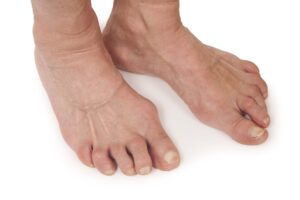
Hip Dysplasia: A Guide for Parents and Adults
Hip dysplasia (developmental dysplasia of the hip – DDH) is a condition that affects the hip joint.

Most of us have experienced that feeling of rolling our ankles. It often occurs unexpectedly, then causes a lot of pain and discomfort that stops us doing what we love. We might ice our ankles for a few days, seek some treatment in the hope that it will go away. Once the pain subsides, we go back to doing what we normally do, only for the same ankle to be reinjured. Unfortunately, this is a common occurrence with ankle sprains.
As with the previous blog, ankle sprain injuries more commonly occur to the outside of your foot, making up for approximately 80% of ankle sprain injuries. Assuming an individual does not have a history of ankle sprains, the most common causes for one is an unexpected twist or turn that causes the foot to roll outwards. This may occur while walking or running, however, it more likely occurs during sporting activities that involve a lot of side – to – side movement, such as rugby, soccer and dancing. A history of ankle sprains is the highest risk factor for developing another sprain in the future. Therefore, understanding why an ankle sprain continues to occur will allow us to understand the importance of rehabilitation for future prevention.
There are three main ligaments that are affected in an ankle sprain: the anterior talofibular ligament, calcaneofibular ligament and the posterior talofibular ligament. They work together to resist you inverting your ankle to stop you from rolling on the outside of your foot. Once one of these ligaments are damaged, there is less of this resistance applied. This is because ligaments do not have an extensive blood flow to allow healing to occur effectively when compared to muscles and bony injuries. Each of the three lateral ligaments offer various strengths due to their size and density. For example, the anterior talofibular ligament is the weakest of the lateral ligaments compared to the posterior talofibular ligament, making it more likely to be injured.
Often with an ankle sprain, rehabilitation is not performed timely. The longer the rehabilitation is delayed after an injury, the longer it will take for a ligament to heal, making your ankle less resistant to an inversion motion. This is the main reason why ankle sprains continue to haunt us. We may be eager to return to sport knowing that our pain has subsided, however, we commonly return earlier than rehabilitation allows us to. Unfortunately, this is the nature of ligament injuries. Therefore, it is vital to ensure you properly rehabilitate your ankle, provide your foot and lower leg with enough strength and balance to resist further inversion motions once an ankle sprain has already occurred.
Ankle sprains can be a difficult injury to treat if not managed properly. If you’ve had an ankle sprain in the past or you’re unsure how to manage a current ankle sprain, let the team at SOLE – LUTION PODIATRY help you. You can reach us on 02 9569 5145.
Thanks!
Luke Sassine
Sole – Lution Podiatry

Hip dysplasia (developmental dysplasia of the hip – DDH) is a condition that affects the hip joint.

Heel pain can be a real drag, especially when that first step in the morning feels like stepping on a tack. One culprit behind this discomfort can be heel spurs. But what exactly are they, and more importantly, how can you fix them?

Arthritis in the feet can significantly disrupt your daily life, turning simple walks into painful struggles.